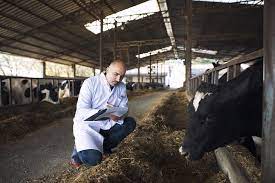Contagious Bovine Pyelonephritis (CBP) in Cattle
Contagious Bovine Pyelonephritis (CBP) is an important infectious disease of cows all over the world. It is caused by the bacteria Trueperella pyogenes which attacks the urinary system, including the kidneys and urinary tract. Etiology: The main causative agent is a strain of bacteria known as Corynebacterium renale. The following factors contribute to the development … Read more










